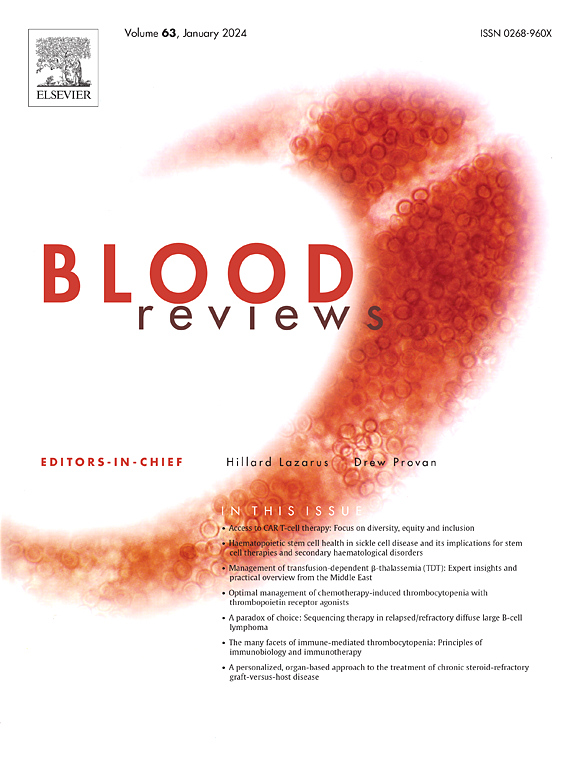Haploidentical transplantation: An optimal platform for graft manipulation and cellular therapies
IF 6.9
2区 医学
Q1 HEMATOLOGY
引用次数: 0
Abstract
Allogeneic hematopoietic stem cell transplantation (allo-HCT) remains a curative therapeutic option for patients with high-risk hematologic malignancies. When a fully matched donor is unavailable, haploidentical hematopoietic stem cell transplantation (haplo-HCT) provides a viable alternative. Over time, haplo-HCT procedures have significantly evolved, improving outcomes in treatment related mortality (TRM), especially in graft-versus-host disease (GvHD). However, challenges such as delayed immune reconstitution and disease relapse persist. Advances in in vivo graft manipulation techniques, such as post-transplant cyclophosphamide (PTCy) and ex vivo approaches, including TCRα/β and CD19 depletion, have shown promise in reducing the risk of severe GvHD without increasing the relapse rates. Innovative strategies, such as haploidentical donor lymphocyte infusions, “suicide-switch” mechanisms, ORCA-Q product infusions, and CAR based therapies offer potential to further optimize outcomes. This review examines the graft manipulation modalities in the haplo-HCT setting, highlighting their role in advancing cellular therapies and providing new hope in the fight against life-threatening diseases.
单倍体移植:移植操作和细胞治疗的最佳平台。
同种异体造血干细胞移植(allogene hematopoietic stem cell transplantation, alloo - hct)仍然是治疗高危恶性血液病的有效选择。当没有完全匹配的供体时,单倍体造血干细胞移植(haploo - hct)提供了一个可行的选择。随着时间的推移,单倍hct技术已经显著发展,改善了治疗相关死亡率(TRM)的结果,特别是在移植物抗宿主病(GvHD)中。然而,免疫重建延迟和疾病复发等挑战仍然存在。体内移植操作技术的进展,如移植后环磷酰胺(PTCy)和体外方法,包括TCRα/β和CD19去除,已经显示出在不增加复发率的情况下降低严重GvHD风险的希望。创新策略,如单倍体供体淋巴细胞输注、“自杀开关”机制、ORCA-Q产品输注和基于CAR的疗法,提供了进一步优化结果的潜力。本文综述了单倍hct环境下的移植物操作方式,强调了它们在推进细胞治疗方面的作用,并为对抗危及生命的疾病提供了新的希望。
本文章由计算机程序翻译,如有差异,请以英文原文为准。
求助全文
约1分钟内获得全文
求助全文
来源期刊

Blood Reviews
医学-血液学
CiteScore
13.80
自引率
1.40%
发文量
78
期刊介绍:
Blood Reviews, a highly regarded international journal, serves as a vital information hub, offering comprehensive evaluations of clinical practices and research insights from esteemed experts. Specially commissioned, peer-reviewed articles authored by leading researchers and practitioners ensure extensive global coverage across all sub-specialties of hematology.
 求助内容:
求助内容: 应助结果提醒方式:
应助结果提醒方式:


